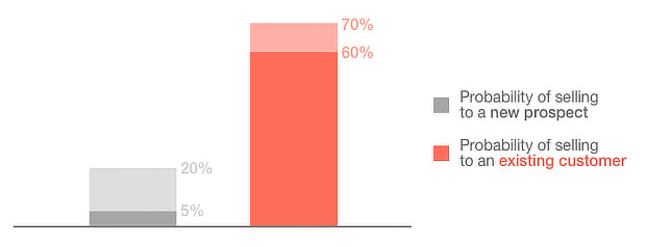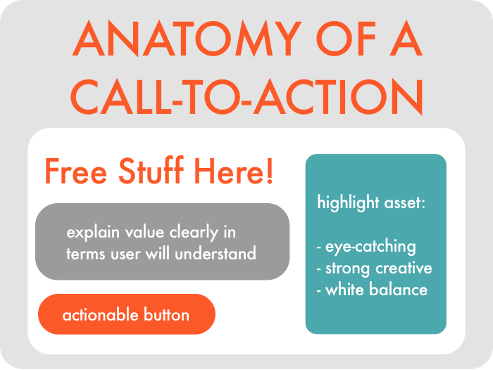The Use Case: A Powerful Content Marketing Resource
Storytelling has long been an effective way to market new products or services — especially for businesses looking to attract other businesses that prefer some added clarity. Case studies and use cases represent two ways (among many) of content storytelling.
People credit French economist, sociologist, and engineer Pierre Guillaume Frédéric Le Play with introducing the concept of the modern case study. Pierre did this to present details about family budgeting, but the concept can be applied to many different real-life situations.
The use case presents a similar, yet unique concept. For starters, a use case does not always present a case study. Yes, it can involve real-life examples to illustrate a point, highlight product features, or show the practical utility of a service or product. However, use cases can also feature theoretical examples.
A use case complements a content creation perspective by allowing more leeway in presenting a concept, product, or service. Below, I explore this topic further.
Why Use Cases Are So Appealing Content-Wise
The use case has a long history of being used in tech-related fields, although it can be applied to other industries and niches. It refers to a series of actions or event steps between a system and a “role” or “actor.” As mentioned above, the “actor” can be a real person, or it can be a composite or fictionalized “role player” based on known target audience characteristics and other factors.
In the world of content marketing, the use case has become an unexpected and powerful “currency” by offering content marketing value. Testimonials can provide added credibility to marketing content. In fact, testimonials can be use cases!
In a nutshell, use cases cut to the chase by offering tangible explanations of:
- Core benefits of a particular product, service, or business
- Core business values
- Basic product/service features
Illustrating How Services/Products Can Help Someone
Anyone searching for a business, product, or service online will navigate through several choices. Products and services, whether physical or digital, often require a clear explanation of how the offering can benefit someone.
Use cases can solve this problem. For instance, let’s say a software business introduces a new type of inventory management software.
A use case can be used to illustrate how this new software product works. This could be done by creating a fictional business owner having trouble keeping track of inventory. The content presented would show how the new inventory software solves this problem and makes inventory management much easier.
The use case is also appealing because it can (and should) supplement or complement traditional marketing — especially “features and benefits” marketing materials. In fact, using use cases the right way can even completely replace them!
Furthermore, people typically relate to content with use cases peppered into the mix more so than they do to “cold” features/benefits — like the bullet list approach.
Leading the Target Audience Along the Desired Path
Use cases become effective when based on a solid understanding of the target audience. With the target audience clearly defined, a use case can be tailored to lead the intended searcher or customer along the desired path.

To convince hesitant potential customers to complete a purchase, a use case can provide an added incentive to take this step. This could happen if hesitation results from not understanding a product function, the problem it solves, or the uncertainty of smart buy status.
Leaving Room for Upselling
Upselling has a bad rap in some circles. But it can actually be a good thing if you craft the upsell content in a non-pushy way.

This might be accomplished by using a use case to show product/service page visitors the benefits of similar, available selections. If done in a subtle way, this effectively leaves the choice entirely up to the website visitor.
CTAs Can Boost the Power of Use Cases
A call-to-action (CTA) convinces someone to take the desired action by stressing a sense of urgency or importance. Due to how use cases can be set up, they can be naturally enhanced with an equally compelling call-to-action.

When paired with a use case, a call-to-action should clearly spell out the steps the reader should take next. The use case can be further emphasized by placing a CTA on a landing page specific to the use case. This further emphasizes the use case by eliminating other distractions.
Other Options With Use Cases
Use cases present incredible flexibility in that they can feature any type of content that clarifies the benefits or features of a product or service. Use case content of this nature can also include:
- Testimonials: Real people tell others how they benefited from something, often by discussing their own product/service experiences.
- Video content: Visual content draws more attention online than text alone — a great way to introduce products/services or illustrate their benefits.
- How-to screen capture images: Screen captures of how-to illustrations represent another visual way to make use case content more impactful — like a series of screen captures showing how to use a product or service.
- Infographics: Graphics can tell a use case story in a way that further improves clarity and presents the intended narrative in a more cohesive way.
Key Takeaways
- Use cases present powerful, tangible examples of product/service features and benefits.
- Use cases represent a highly flexible content resource for presentation — with options that include unique landing page content, video content, testimonials, and how-to screen captures.
- Use cases can help with subtle, effective upselling.
- A well-presented use case offers a clear path for the target audience to follow — especially when paired with an equally effective call-to-action.
[This article was originally published on the Vestorly Content Insights Report]






